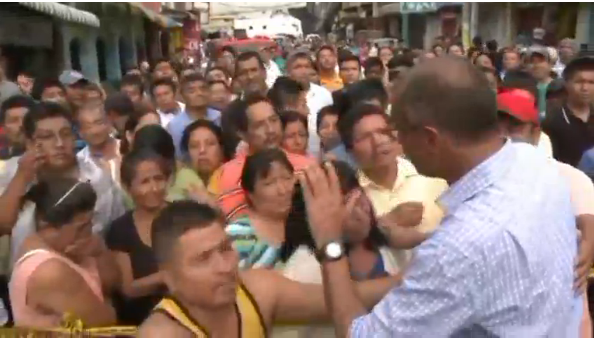
PORTOVIEJO, MANABI, Ecuador (Reuters) – As the death toll from Ecuador’s biggest earthquake in decades soared to at least 246 on Sunday (April 17), desperate victims begged Vice President Jorge Glass to help find their missing relatives as rescuers using tractors and bare hands hunted desperately for survivors in shattered coastal towns.
The 7.8 magnitude quake struck off the Pacific coast on Saturday and was felt around the Andean nation of 16 million people, causing panic as far away as the highland capital Quito and collapsing buildings and roads in a swath of western towns.
President Rafael Correa rushed home from a trip to Italy to supervise the emergency and was due to address the nation on Sunday evening. “The immediate priority is to rescue people in the rubble,” he said on Twitter.
“Everything can be rebuilt but lives cannot be recovered and that’s what hurts the most,” Correa told state radio.
Vice President Jorge Glas visited the quake zone and said 246 had died and about 2,527 people were injured.
Coastal areas nearest the epicenter were worst affected.
Authorities said there were some 163 aftershocks, mainly in the Manabi province. A state of emergency was declared in six provinces.
Women cried and inhabitants said children were trapped.
The quake has piled pain on the economy of OPEC’s smallest member, already reeling from low oil prices, with economic growth this year projected at near-zero. It has also propelled Glas – a possible candidate in Ecuador’s February 2017 presidential election – into the limelight.
The government called it the worst quake in the country since 1979. In that disaster, 600 people were killed and 20,000 injured, according to the U.S. Geological Survey.








